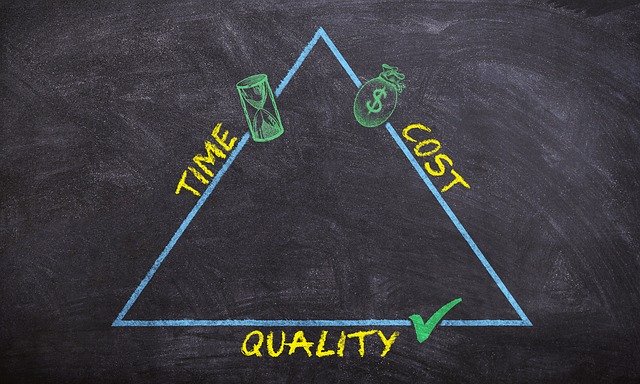5 Cost Rationalizing Measures That CIO’s Can Consider
The success of business continuity plans depend on making well informed, integrated business decisions. A big part of such decisions would involve careful analysis and implementation of application portfolio rationalization plans.
Natural disasters, a tanking economy, an aggressive competitor or trade wars could all be reasons an organization may introduce application portfolio rationalization in keeping with the business continuity plan.
The application rationalization plans should be such that they align IT with business plans. IT spending covers a vast range of areas including business applications, networking, IT personnel, end user technology and data centers. CIOs the world over today are facing increasing pressure to achieve immediate IT cost savings in a manner which is least damaging to the long term health of the organization. In order to do this CIOs need to have a thorough understanding of all IT items in the profit and loss statement and the balance sheet.
It is said that organizations cannot cut their way to growth but can cut their way to survival. A thorough understanding of this is required especially since digital transformation helps to sustain retail business and is extremely necessary to stay competitive.
5 Cost Rationalization Measures
The amount of time and level of effort for such programs is often dictated by time pressures. Businesses should prioritize planning regardless of these pressures as it will drive the strategy, approach and effectiveness of the execution in the long term. Beyond the size of the budget, the CIO should also determine and establish the enterprise's preparedness and willingness to allocate the budget necessary for undertaking this.
Assessing IT cost rationalizations measures could be done bearing the following in mind
1)Target Immediate Impact
 Annual billing plans offer tremendous in terms of increasing cash flow. It therefore would make sense to eliminate, reduce or suspend items that will impact the organization immediately. This would include items such as quarterly license fees or monthly subscription fees. Options with annual payment work best.
Annual billing plans offer tremendous in terms of increasing cash flow. It therefore would make sense to eliminate, reduce or suspend items that will impact the organization immediately. This would include items such as quarterly license fees or monthly subscription fees. Options with annual payment work best.
2)Address Discretionary and Non-Discretionary Costs

Discretionary spending refers to costs and expenses that are non-essential whereas non-discretionary spending is one that is required to be honored by a budget, contract or commitment. Discretionary spending such as for a new project, additional capability or services is often an easier place to start with. However even certain non-discretionary expenses such as certain infrastructure and operations can be cut by reducing usage or service levels. The spotlight therefore would rest on digital transformation return on investment (ROI) which may not be evident in the short term.
3)Assess Total Operating Expenditure (OPEX) and Capital Expenditure Costs (CAPEX)

OPEX( Expenses that an organization incurs for its day to day functioning) has the maximum impact on the finances of a company. Whereas CAPEX (Expenses incurred when the organization acquires assets which will be beneficial beyond the current financial year such as equipment and buildings) and can be considered for cost reduction too.
4)Reduce But Do Not Freeze

The focus should rest on costs that can be reduced or eliminated completely. Some costs tend to be categorized as frozen and remain under the surface for a certain period only to resurface at a later point of time. Such costs needed to be avoided. Memberships and subscriptions to organizations/clubs related to the business of the organization or reading material, are good examples here especially since they can be eliminated completely or reinstated down the road if the necessity arises.
5)Complete Evaluation and Action

The fact that cost rationalization measures can be hard and confronting, is reason enough for several organizations to skim through the surface and not delve deep enough for complete assessment. As a result of this, there is a possibility that this exercise needs to be revisited again and again. To ensure a thorough job in application portfolio rationalization, it would help to bear in mind this sequence of steps
- Data collection
Here a questionnaire to gather information about data elements across business, technology strategic fit functionality and cost dimensions can be the starting point.
- Profiling and Value Analysis
Each of the parameters collected during the previous stage is assigned a weight depending on its contribution towards the technical health and business value of the organization. This would determine further course of action for each of the items listed on the survey.
- Opportunity Mapping
A rationalization map is then created based on the above steps which will help to identify opportunities for application decommissioning, application consolidation, technology upgrade and functional enrichment.
Success Strategies in Cost Optimization
Based on the available budget, CIO’s need to adopt the appropriate cost rationalizing measures keeping the business continuity plan in mind. Digital transformation of various processes is a good way to cut costs in the long term. Some of the methods could be
- Virtualization
It involves replacing physical hardware with their virtual counterparts. This maximizes the use of server resources.
- Software Defined Data Centre
Here service providers deliver networking, storage, computing, telecommunications and other IT functions. Doing so eliminates the need for extra space during high demand times as well as employees spending time on the maintenance of the same.
- Hybrid Cloud Implementation
Cloud computing is a popular method for companies to reduce IT infrastructure costs. Today using the hybrid cloud model, workload can be distributed between public and private environments.
- Standardization of IT Infrastructure
Standardization would ensure consistency across different hardware and software applications. It also helps to maintain compatibility and serves to put everyone on the same platform.
Conclusion
In today’s world operating an agile landscape is of utmost importance. With digital transformation in retail completely driving customer demand, the IT architecture will need to evolve. Many businesses tend to utilize a large part of their IT budget on supporting aging low value legacy systems leaving them with very little capital for optimizing business processes. The goal of application portfolio rationalization is to articulate an architectural vision that enables business continuity plans while creating a solid foundation for the future.
Application rationalization efforts will ultimately help to optimize the application stack of the company, dramatically cut costs and have enough budget to concentrate on trending innovations.

